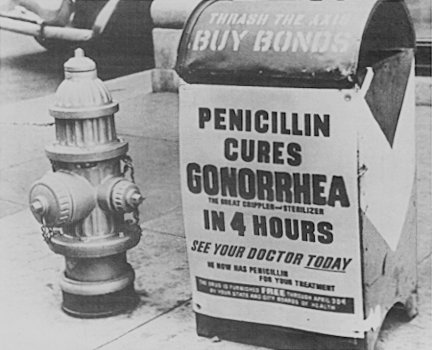 –Commentary by Susan Morey, PharmD. Pharmacy Practice Resident
–Commentary by Susan Morey, PharmD. Pharmacy Practice Resident
A true allergy to penicillin is known to occur in less than 10% of patients exposed to penicillin. 1, 2 The cross-reactivity to cephalosporins has been reported to be approximately 8% to 18% in patients with a documented penicillin allergy. True allergic, type I reactions are IgE mediated, with a spectrum of presentation ranging from urticaria to severe anaphylactic shock.1, 2
The beta-lactam ring has been implicated as the structure responsible for cross-reactivity between the penicillins and cephalosporins.3 However, they differ in that the 5-membered thiazolidine ring of penicillin is replaced with a 6-membered dihydrothiazine ring in cephalosporins. The early reports of cross-reactivity may have been overestimated because, before 1989, the first-generation cephalosporins produced by the Cephalosporium acremonium mold contained small amounts of penicillin. The side-chains have been reported to play a role in allergic reactions to the beta-lactams, and the incidence of cross-reactivity between penicillins and cephalosporins with the same side-chain is 12% to 38%.3 For example, cephalosporins bearing a side-chain similar to benzylpenicillin may be more likely to cross-react with penicillins. Cefadroxil, cephalexin, cefaclor, cefprozil, and cefadroxil have 7-position side-chains similar to that of ampicillin and amoxicillin (Table 1).3 In a small study of patients with an allergy to amoxicillin but tolerance to benzylpenicillin and phenoxymethyl penicillin, the patients were challenged with cefadroxil and cefamandole. Cefadroxil possesses the same side chain as amoxicillin whereas cefamandole does not. Eight of the 21 patients enrolled had an allergic response to cefadroxil while none reacted to cefmandole.4
A meta-analysis has shown that in patients with a history of penicillin allergy versus those without a penicllin allergy, there is a risk of cross-reactivity with cephalosporins related to the specific cephalosporin generation.5 This meta-analysis compared the rate of allergic reaction in patients with and without an allergy to penicillin or amoxicillin. Patients with an allergy given a first generation cephalosporin had an odds ratio in favor of cross-reaction of 4.79. In patients given a second and third generation cephalosporin, the odds ratio in favor of a cross reaction was 1.13 and 0.45, respectively. The first generation cephalosporins showed the most cross-reactivity (OR: 4.79) with penicillins, suggesting the side-chains play a role in antigenicity. 1, 5, 6 The side-chains of several first generation cephalosporins are similar to that of penicillin whereas the side chains of later generation cephalosporins are not as closely related.5, 6 Based on available evidence, the American Academy of Pediatrics endorses the use of second and third-generation cephalosporins in penicillin allergic patients without a severe reaction (i.e., non-IgE mediated).1 Cross-reactivity is highly likely between compounds that share a similar side-chain and therefore alternative therapies should be used. Desensitization may be considered if there is no therapeutic alternative in a patient with an allergy. Patients who have experienced an IgE mediated allergy to penicillin should not be prescribed a cephalosporin due to the severity of the reaction and possibility of cross-reactivity. Prescribing cephalosporin antibiotics in patients with a known history of allergy to penicillins should be done cautiously and with appropriate monitoring.
Table 1. Similar Structure of 7-Position Side Chains of Cephalosporins and Penicillins: Possible Cross Reactivity within Group
| Related Group | Related Group | Related Group |
| Penicillin G | Amoxicillin | Cefotaxime |
| Cephaloridine* | Ampicillin | Ceftizoxime |
| Cephalothin | Cefaclor | Ceftriaxone |
| Cefoxitin | Cephalexin | Cefpodoxime |
|
|
Cephradine | Cefpirome* |
| Cefprozil | Cefepime | |
| Cefatrizine* | Cefetamet* | |
| Cefadroxil | Cefteram* |
* = Not available in the United States
Adapted from Pichichero ME. Pediatrics. 2005;115(4):1048-1057.
References:
-
Pichichero ME. A Review of Evidence Supporting the American Academy of Pediatrics Recommendation for Prescribing Cephalosporin Antibiotics for Penicillin Allergic Patients. Pediatrics. 2005;115(4):1048-1057. http://pediatrics.aappublications.org/cgi/content/full/115/4/1048
-
Apter AJ, Kinman JL, Bilker WB, Herlim M, Margolis DJ, Lautenbach E, Hennessy S, Strom BL. Is There Cross-Reactivity Between Penicillins and Cephalosporins? The American Journal of Medicine. 2006;119:354.e11-354.e20.
-
Novalbos A, Sastre J, Cuesta J, De Las Heras M, Lluch-Bernal M, Bombin C, Quirce S. Lack of allergic cross-reactivity to cephalosporins among patients allergic to penicillins. Clinical and Experimental Allergy. 2001;31:438-443.
-
Miranda A, Blanca M, Vega JM, Moreno F, Carmona MJ, Garcia JJ, Segurado E, Justicia JL, Juarez C. Cross-reactivity between a penicillin and a cephalosporin with the same side chain. Journal of Allergy and Clinical Immunology. 1996;98(3):671-677.
-
Pichichero ME, Casey JR. Safe use of selected cephalosporins in penicillin-allergic patients: A meta-analysis. Otolaryngology-Head and Neck Surgery. 2007;136:340-347.
-
Antunez C, Blanca-Lopez N, Torres MJ, Mayorga C, Perez-Inestrosa E, Montanez MI, Fernandez T, Blanc M. Immediate allergic reactions to cephalosporins: Evaluation of cross-reactivity with a panel of penicillins and cephalosporins. Journal of Allergy and Clinical Immunology. 2006;117:404-410.
-
Beta-lactam. http://www.life.umd.edu/classroom/bsci424/Images/PathogenImages/BetaLactam.
Accessed June 4th 2007
-
Penicillin. http://www.biology.ualberta.ca/people/mike_harrington/biol107/penicillin. Accessed June 4th 2007
-
Cephalosporin. http://upload.wikimedia.org/wikipedia/en/thumb/a/ae/Cephalosporin-nucleus.png/220px-Cephalosporin-nucleus.png. Accessed June 4th 2007.
Image Courtesy of National Institutes of Health

2 comments on “Can You Give A Cephalosporin to a Patient Who is Allergic to Penicillin?”
Dear Sir,
We had a case of fatal anaphylaxis of a 14 year old boy who was treated because of severe exacerbation of asthma. He also had pneumonia. His asthma responded well to standard asthma treatment. However he succumbed to i/v injection of 1G ceftriaxone despite rigorous resuscitation. I believe cepholosporin group should be treated as any other pennicillin as far as allergy is concerned. Stringent precaution and preparation for anticipation of anaphylaxis should be done prior to giving any cephalosporin to asthmatics/any patient with known allergy to penicillin. Reminder: patient can develop anaphylaxis to 1st dose ceftriaxone despite -ve skin test. I totally agree with you statement of the last 2 sentences of the last paragraph of this article.
Sincerely,
Dr. Shahrom.
Comments are closed.